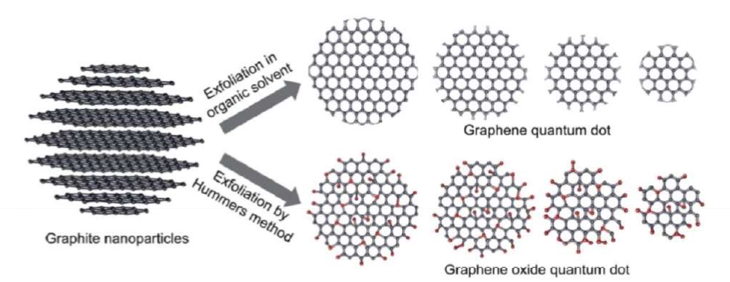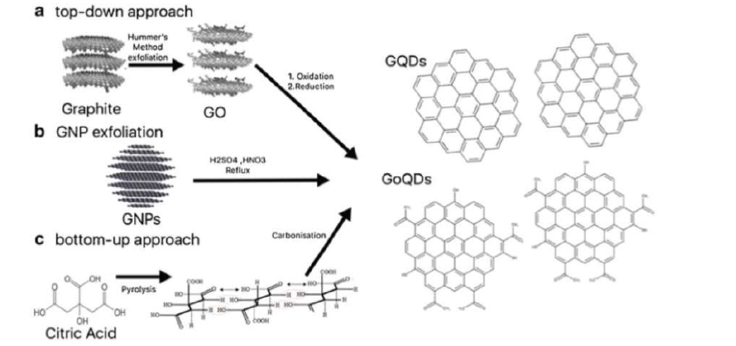Robot Of Atoms
ROBOT OF ATOMS
MOTIVATION
Naturally occurring atoms are the potential ingredients used in undertaking Quantum Information Processing, wherein the electrons that exist in atomic orbits are bound to exist at multiple locations with some probabilities as a part of their Quantum nature, which are exploited to store Quantum information in the form of elementary units called as qubits (just like bits in conventional computing) and process them with exponential speed up. However, qubits based on just valence electrons can be very unreliable due to fragility of qubits to the surrounding environment which induces noise into the system via disturbing the coherence of the qubit systems.
Thus, to overcome such an inability Quantum Research Community looked for an alternative system which is free from the environment induced noise. Such systems are created by a microscopic box containing electrons, called as Artificial Atoms, wherein the movements of electrons were made to mimic the dynamics of electrons in general that exists in naturally occurring atoms. Moreover it is possible to have a higher number of electrons in such boxes, which allow one to realize much more robust qubits compared to which were previously thought possible with conventional atoms.
As we humans went ahead to create Robots, which are machines employed to undertake all our tasks with ease and perfection, wherever possible in which human presence and cognizance is not mandatory. Following the similar lines we call these Artificial Atoms as robots of natural atoms, which are employed wherever the naturally occurring atoms are not suitable. In fact artificial atoms do not possess the nucleus unlike conventional atoms, notion which is similar to the Robots lacking in the sole intelligence we humans possess in general. Let's try to understand more about these Artificial Atoms in this article!
Peculiarity of Artificial Atoms
Artificial atoms are constituted by confining a charge per say an electron to a three dimensional space mentioned above as microscopic boxes (which are known as Quantum Dots), wherein the charge and energy of a sufficiently small charged particle taken from metal or semiconductor are quantized just like those of an atom. The current passing through such a quantum dot reveals atom-like features in a spectacular way.
The Quantum dots with the same charge configuration but different sizes give off different colours when subjected to UV light. For example Cadmium Telluride of different sizes gives off different colours when subjected to UV rays.

One of the several advantages of Quantum Dots is that they are small enough to have quantum behaviour and at the same time large enough to remain stable while remaining in the Quantum regime. Hence, these materials are now being seen as one of the means to realize the potential building blocks of upcoming Quantum Computers.
Artificial atoms for Quantum Computers
It was theoretically proposed in the 1930s to create Artificial atoms having no nucleus but just electrons confined to a region, and then it took more than six decades to experimentally realize them.
The Artificial Atoms realized in silicon chips offer improved stability for quantum computing, moreover with a higher number of electrons, they can be reliably used for calculations in quantum computers unlike single electron based conventional atoms which happened to be unreliable.


A Siliconqubit based chip
The process of preparation of an artificial atom involves application of voltage to the silicon via a metal electrode having positive charge, which attracts spare electrons from the silicon to form the quantum dot, in an infinitesimally small space of only around 10 nanometres in diameter, with gradual increase in voltage would lead accumulation of new electrons in the same space.
In comparison to a real atom, wherein a positive charge nucleus is in the middle, surrounded by the negatively charged electrons in three-dimensional orbits, in the case of Artificial Atoms, the gate electrode plays the role of positive charge, which in fact separated from the electrons by an insulating barrier of silicon oxide, and the electrons orbits around the centre of the quantum dot within a certain shells, in two dimensional circular disc instead of spherical shaped space.
Addition of an extra electron leads to creation of higher order Quantum dots equivalent of Hydrogen, Lithium and Sodium so on in the periodic table, wherein the lone electron in the outermost shell offers qubit realization, moreover having the either paired or single electrons within the innermost shells ensures the stability to outermost electrons. However, if there exists a pair of electrons within a shell, then they complete the shell and become unavailable to realize a qubit as their spins align opposite to each other resulting in zero spin.
When it comes to realization of qubit via superposition of quantum states, an unpaired electron's spin that could exist in multiple states, is employed by associating the bits O and 1 to their spin orientation having different energies. Hence, it is crucial to have an odd number of electrons, for example, an artificial atom with five electrons, or 13 electrons, is much more robust.
The new artificial atoms having the localized electron states with the same energy allow for switching between different quantum states, which further allows to store information. Here the electrons preserve arbitrary superpositions for a long time, which is an ideal ingredient for realizing quantum computers, moreover, the involved method has the big advantage of scalability, as it allows to fit many such artificial atoms on a small chip required for Quantum Information Processing.
Graphene based ARTIFICIAL ATOMS?
Among different ways of creating artificial atoms, the simplest one is putting electrons into tiny flakes, for example, cutting out a thin layer from a material, ,or chemically producing a single layer structured material with few electrons in its surface orbitals. The newest and most exciting technology is creating Quantum dots using Graphene extracted from Graphite, one af the allotropes of carbon being the other one. Graphene, which is a single layer of carbon atoms arranged in a two-dimensional honeycomb lattice, whose name is derived from "Graphite" with the suffix "ene" to emphasize the fact that it is a allotrope of carbon with numerous double bonds. These quantum dots are tiny prisons for electrons confined to certain orbits and exhibit atom-like properties.


However, the symmetry of the material is broken by the edges of the flake as they are not perfectly smooth, which results in reduction of the special four-fold multiplicity of states in graphene to the conventional two-fold one. In order to avoid such symmetry loss, one could look for clever combinations of electrical and magnetic fields to trap and confine the electrons from the surface orbital of the graphene to that particular region, in this way a tiny region is created within the graphene surface, in which low energy electrons can be trapped, wherein the electrons are forced into tiny circular orbits by applied magnetic field.
Transistor based ARTIFICIAL ATOMS
Apart from creating artificial atoms by extracting small particles of metal or semiconductor, it is also possible to make them with help of electronic circuits and chemical processes. Similar to natural atoms these also possess discrete spectrum of energy levels.
When it comes to electronic circuit based preparation, classification is done according to the transistors used:
a. All metal atoms
b. The controlled barrier atom
c. The two-probe atom
 Insert shows potential seen by the trapped electrons as a functions of positions.
Insert shows potential seen by the trapped electrons as a functions of positions.
In all these three methods, electrons are confined to a smaller region by employing the material boundaries, in particular surrounding the electron-containing structures, say metal (regions of blue) or semiconductor (regions of red) particles with insulators. In all metal atoms, the electrons have to tunnel through an insulator to constitute a current from source to drain, and along the way they would be trapped to very small regions, wherein the gate metallic electrode used to have a control. In the case of controlled barrier atoms, an electric field induced at the interface of insulator and semiconductor by the positive voltage of the gate electrode, would lead to quantization of energies of electrons motion along the interface, and at low temperatures electrons move only in two dimensional direction. When a negative voltage is applied the electrons do not accumulate at the interface and confine to a narrow channel between the source and drain, which further could be controlled by using suitable source and drain currents to have potential barriers further leads to creation of Artificial Atoms as show in the figure inset.
The two probe atom case is similar to all the metal atoms with gate electrode missing, here the semiconductor is sandwiched be- tween the insulators which induce barriers that confines the electrons.
Apart fromQC the future prospects of ARTIFICIAL ATOMS:
Ability of Artificial Atoms of different sizes, for example Cadmium Telluride, to emit different colors in response to UV light allows one to develop display screens required for electronic devices like televisions, mobile screens, and other display electronic gadgets.
Artificial Atoms with single, double, triple and higher number of electrons suitable for replacement of conventional atoms such as Hydrogen, Helium, Lithium and so on with the same number of electrons, respectively, in making artificial compounds., but still advancements in necessary technology are yet to happen.
In fact having this path breaking technology based on Artificial Atoms is highly mandatory for the future as the number of electronic elements on a chip would double every 18 months according to the Moore LaW. With conventional atoms, such advancement along with reduction in the chip dimensions is not possible as the control over flow of charges become very difficult.
~Quantum Computing Club
~IIIT Dharward